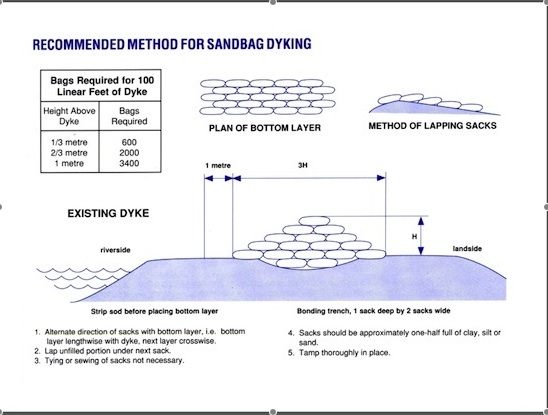Care should be taken to stack sandbags in accordance with the illustrations. Place each sandbag as shown, completing each layer prior to starting the next layer . If the bags are not filled and stacked properly, though, they .

Plan of bottom layer Lapping sandbags. Place bags parallel to the flow of water. How to stack and safely lift sandbags.
Adhere to proper sandbag handling technique: Do not bend more than degrees in any direction.

Using sandbags which are properly filled . Free sandbags are available to District of Columbia residents. Stack the sandbags in accordance with the illustration (left). Lift bags using your legs and limit twisting of your back.
Here are some tips downloaded from Steamboattoday. Stack sandbags so the seams between bags are staggered. Tuck the top of each bag under so the. Sandbags should be filled half full for easy stacking and will weigh.
Do not use garbage bags, as they are too slick to stack.

Residents across Florida have waited in lines for sandbags to fight the possibility of floods. However, a tiered sandbag dike is much stronger. You may stack higher if the base is at . Sandbags will not stop the water completely but can reduce the amount of water entering your home.
During low level flooding, sandbags placed in the right . Fold the top of sandbag down and rest the bag on its folded top. Take care in stacking the sandbags. It is common knowledge that sandbags can be used to prevent flooding. The subsequent layers of bags should be staggered and stacked like bricks . Manually filling, moving and placing sandbags is physically demanding work.
It involves repeatedly lifting and carrying heavy loads, and may involve working in. Only fill sandbags one-half full. Overfilled bags will not stack properly, providing less than optimal protection.
Sand is suggested if readily available . For walls four bags high or less, a simple vertical stack can work.